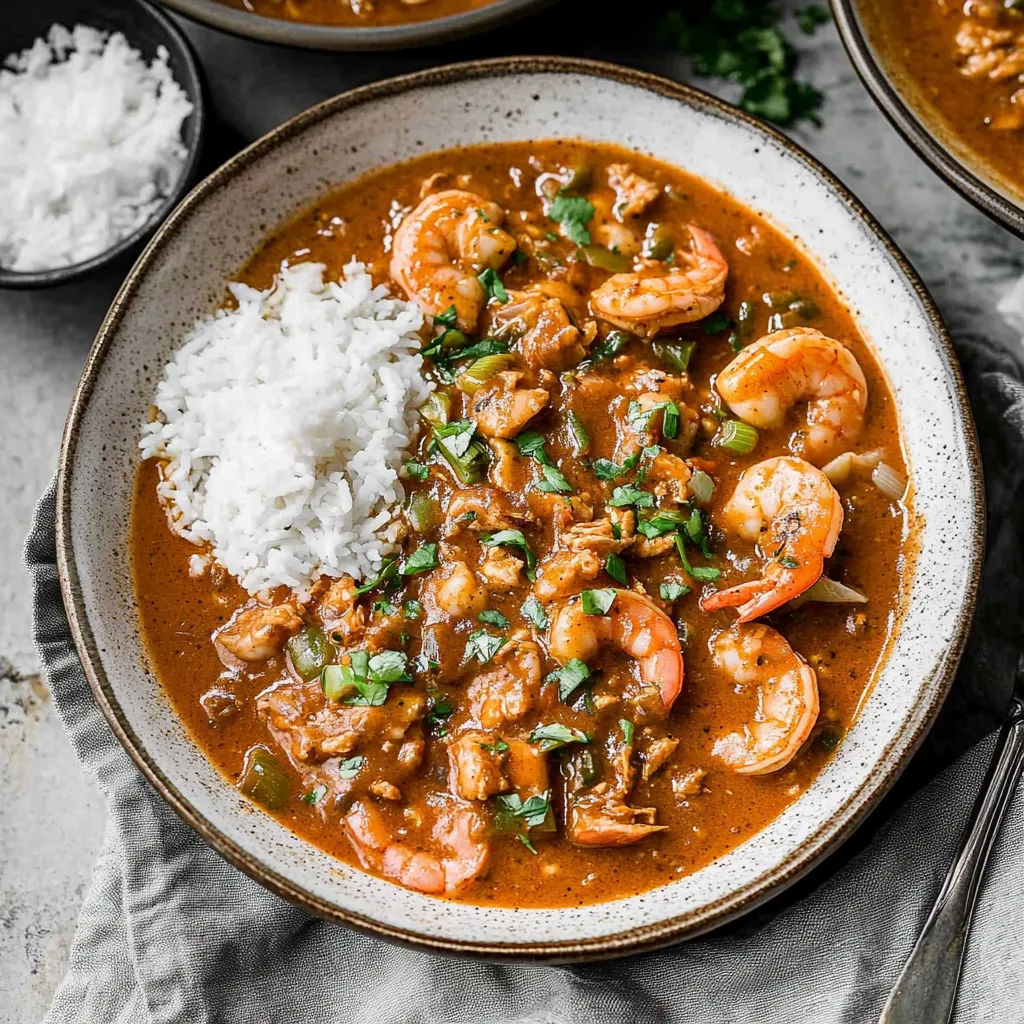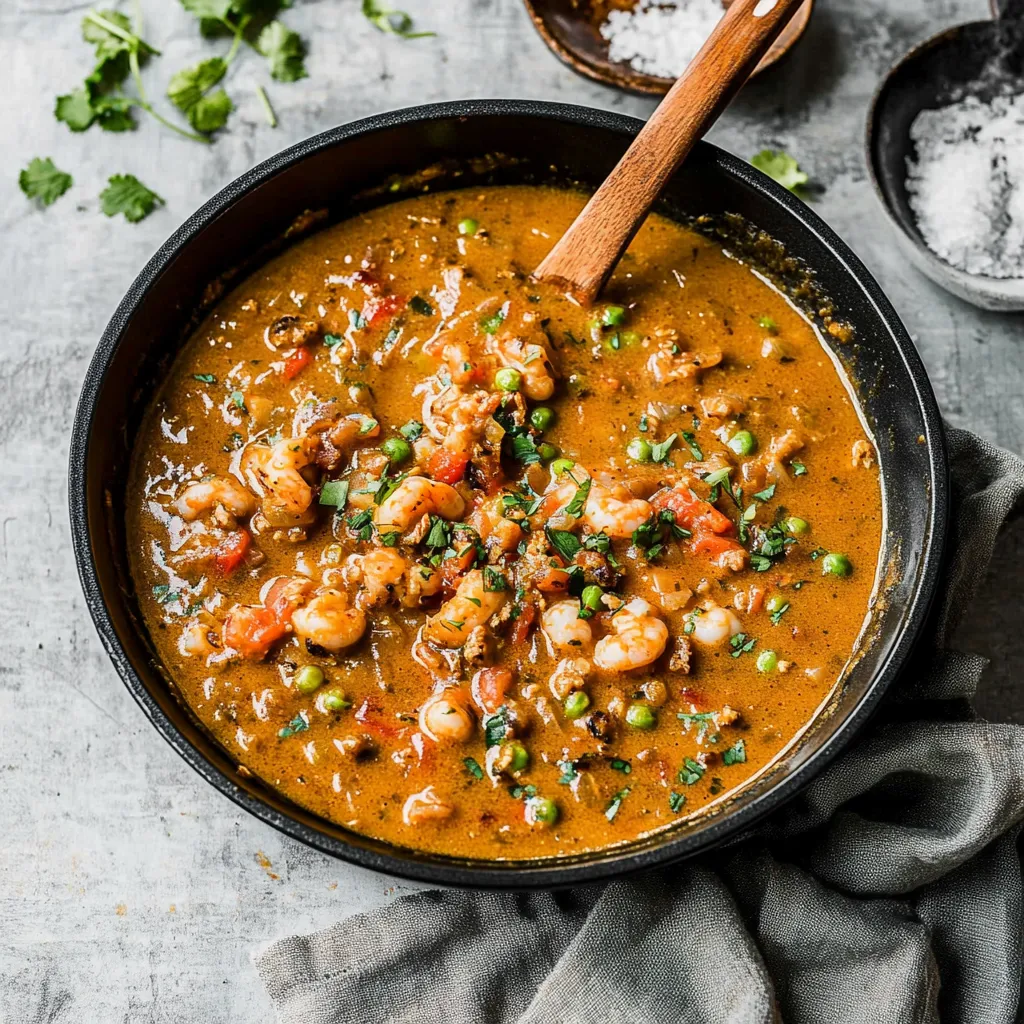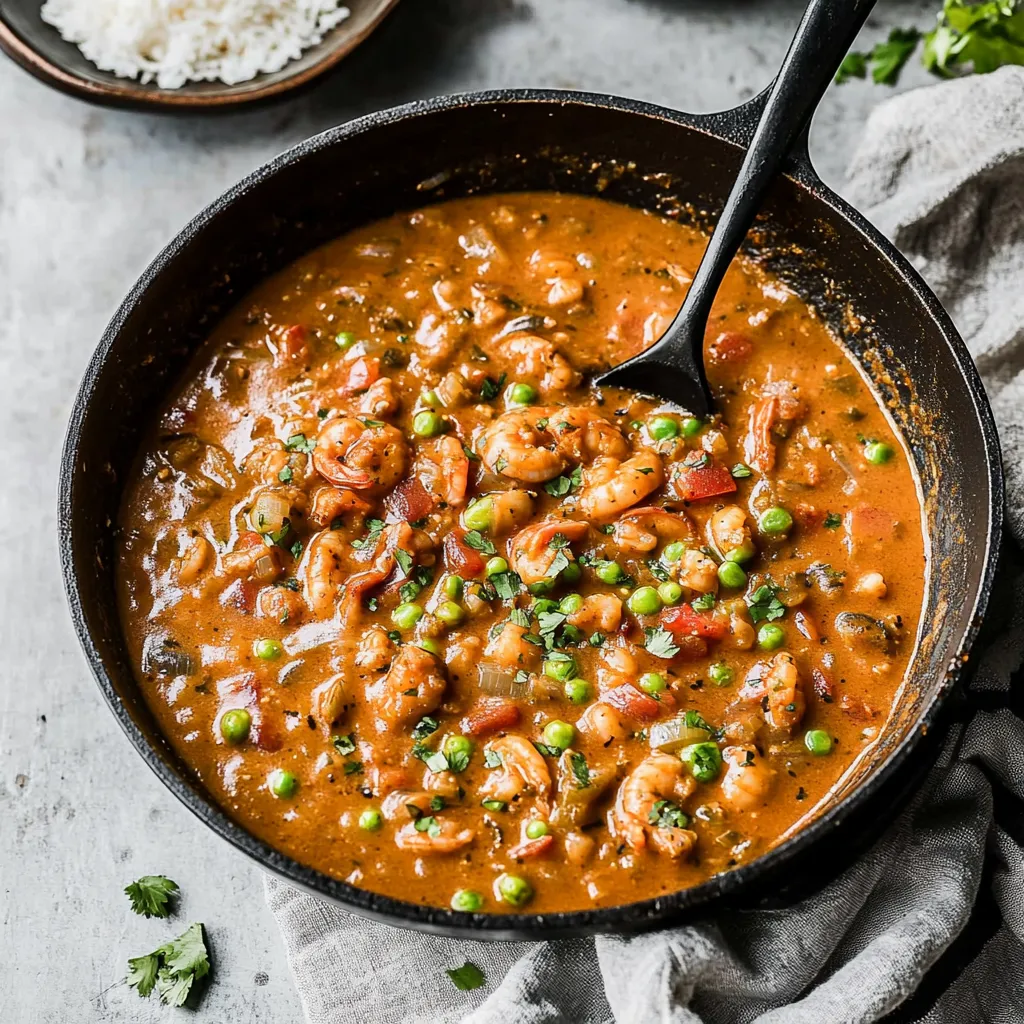 Pin it
Pin it
This hearty Bayou specialty turns crawfish into a buttery, mouthwatering delight. Each bite delivers perfectly cooked tail meat swimming in a golden sauce with deep flavor, making a dish that's both down-home and fancy at once.
I've tweaked this dish for years and found that spending extra time on the roux makes all the difference for that complex flavor everybody loves. Just last week, my friends couldn't get over how perfectly the sauce coated every bit of rice.
Key Ingredients Breakdown
- Crawfish Tails: Try to get authentic Louisiana crawfish for the real deal taste. They need to be plump, pink, and smell fresh. Check for 'Louisiana' on the package.
- Butter: Go for good unsalted butter when making your roux. The fancy European kind with extra fat really steps things up.
- Holy Trinity: You want fresh, crunchy celery, onions, and bell peppers as your flavor base. Cut them all the same size so they cook evenly.
- Seafood Stock: Making your own is best, but good store stuff works too. It should look clear and smell nice.
- Seasonings: Fresh garlic, cayenne, paprika, and thyme give it depth. Make it as spicy as you like.
- Flour: Just regular all-purpose flour for your roux. Make sure it's not old or stale.
Whipping Up Your Dish
- Veggie Prep Work:
- Start by cutting your veggies into tiny, same-sized pieces about 1/4 inch across. When they're all the same size, they'll cook evenly and make your sauce taste better. Cook them in butter until they're soft but not brown to get all their flavor out.
- Making Your Roux:
- This step needs you to take your time and pay attention. Mix equal amounts of butter and flour over medium-low heat, and keep stirring. Watch it change from white to light brown to peanut butter color. The smell will go from floury to nutty. This usually takes about 10-15 minutes of constant stirring.
- Adding The Stock:
- Pour in your seafood stock a little at a time, stirring like crazy to avoid lumps. Wait until each splash is mixed in before adding more. Your sauce should be thick enough to stick to a spoon but still flow smoothly.
- Adding Crawfish:
- Gently stir in the crawfish tails to the bubbling sauce, just warming them through without cooking them too much. Their natural sweetness should work with the rich sauce, not fight against it.
 Pin it
Pin it
My grandma always told me that real étouffée should feel rich but never too heavy, with every flavor standing out while still working together.
Timing It Right
Keep an eye on how thick your sauce gets. It should coat rice nicely but not be too sticky. The crawfish just needs enough time to warm up while staying tender.
Fancy Presentation
Spoon it over fluffy long-grain rice and let the sauce flow down naturally. Sprinkle fresh parsley and green onions on top for a pop of color and extra flavor.
Custom Touches
Feel free to add classic Louisiana extras like file powder or more cayenne if you want it spicier. Just make sure whatever you add works with the delicate crawfish flavor instead of taking over.
Keeping Leftovers
Let it cool all the way before putting it in the fridge. It often tastes even better the next day after the flavors have mixed together. Heat it up slowly to keep the sauce from breaking.
 Pin it
Pin it
After cooking this dish countless times, I've found the secret is sticking to old-school methods while adding your own little tweaks. What you end up with is food that honors its Louisiana roots while creating fresh memories at your dinner table.
Frequently Asked Questions
- → What's the best crawfish to use?
- Stick with crawfish from Louisiana. Avoid imported brands and ensure the packaging says 'Louisiana' for top quality.
- → Can I swap the seafood stock?
- Absolutely. Chicken or vegetable stock works, though seafood stock gives the best traditional flavor.
- → How do I know the roux is ready?
- Stir until the color turns golden, like peanut butter. Be careful not to let it burn while cooking!
- → Can this dish be made in advance?
- Yes, it reheats beautifully and can be frozen up to three months, making it a great prep-ahead option.
- → What makes Cajun different from Creole versions?
- Cajun versions skip tomatoes, while Creole recipes tend to include tomato paste or fresh tomatoes.
